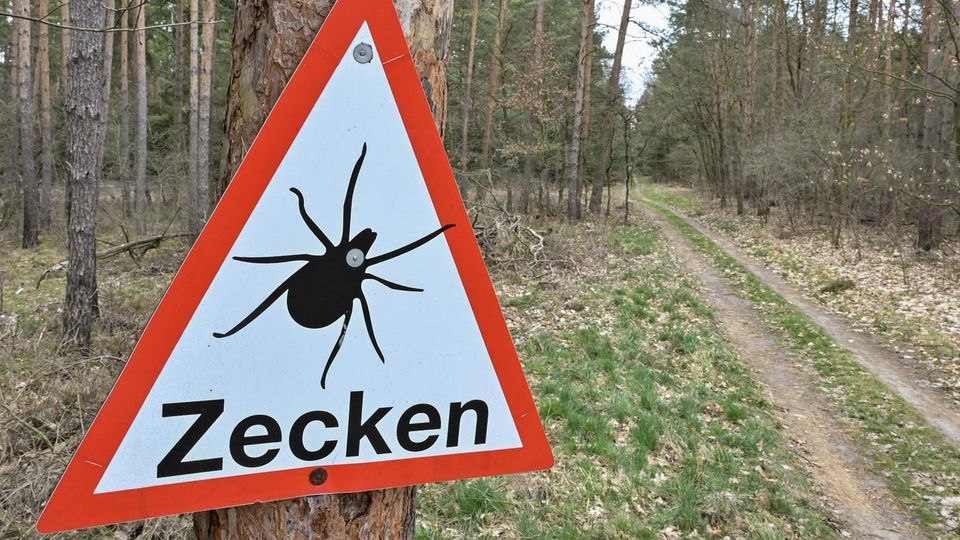Stiko recommends vaccination
Danger from ticks: Map shows where the TBE risk areas are in Germany
Ticks transmit diseases such as TBE: In the picture the common wood tick
© Marijan Murat/dpa/archive image
Ticks are on the rise across Germany. The arachnids transmit dangerous diseases. A map shows where the TBE risk areas are in Germany
Anyone who takes advantage of the first warm days of spring for a walk in the forest, a picnic in the park or an afternoon nap in the countryside can quickly become the object of desire Ticks will. The unpleasant bloodsuckers, which can transmit dangerous diseases to humans and animals when they bite, are already on the hunt for prey.
As cold-blooded animals, ticks need a certain minimum temperature in order to be active, as Berthold Langenhorst, managing director of the Nature Conservation Association (Nabu) in Hesse, explained. “Below 7 to 8 degrees they usually go into hibernation and are then no longer able to move.” The ever warmer winters increased the tick density. In southern Hesse, for example, the bloodsuckers are now active almost all year round, said Langenhorst.
This means that the arachnids pose a risk to adults and children who spend time outdoors early in the year. According to the Robert Koch Institute (RKI), the most dangerous infections transmitted by ticks in this country include Lyme disease and tick-borne encephalitis (TBE). Lyme disease is a bacterial infection and can only be treated with antibiotics. TBE, on the other hand, is an inflammation of the brain, meninges or spinal cord and is caused by a virus that you can be vaccinated against.
TBE: Map shows where the risk areas are
The Standing Vaccination Commission (Stiko) recommends this vaccination for all children and adults who spend time outdoors in TBE risk areas. The map below shows which rural and urban districts are designated as risk areas:
“Vaccination is the best protection against TBE disease. The increasing number of TBE risk areas in Germany identified by the RKI shows how important prevention is,” emphasized Hesse’s Health Minister Diana Stolz (CDU). Across Germany, the RKI currently identifies 180 districts as TBE risk areas. Bavaria and Baden-Württemberg, southern Hesse, southeastern Thuringia, Saxony and southeastern Brandenburg are particularly badly affected.
Ticks prefer warm, humid summers
According to experts from the Hessian State Office for Health and Care, how active ticks will be in this country this year depends on temperatures and humidity. “It can be said that there is a high level of activity of the common wood tick when there are warm, humid summer temperatures,” said the health department – because this tick species reduces its activity when it is too dry and hot. The common wood tick is considered the most common type of tick in Germany.

So how can you protect yourself from ticks – in addition to a TBE vaccination? Nabu gives numerous tips on its website: You should avoid long stays in “tick biotopes” with grasses, ferns and bushes in the summer or search your clothing and body afterwards. “Adults should pay attention to ticks on the legs, groin and pubic hair, because adults usually brush off ticks from low vegetation when running,” advises Nabu. In children, you should pay particular attention to the scalp around the hairline. “Light-colored clothing helps ticks to be discovered more easily, while smooth fabrics offer the animals less support.”
According to Nabu, the arachnids prefer to stay on dense, low herbs and bushes that offer sufficient moisture but also protection from sun and wind. There they lie in wait for mammals, which they recognize by vibrations, body heat, breathing air or the smell of sweat. They let them brush you off as they pass by and look for a place where they can sting.


